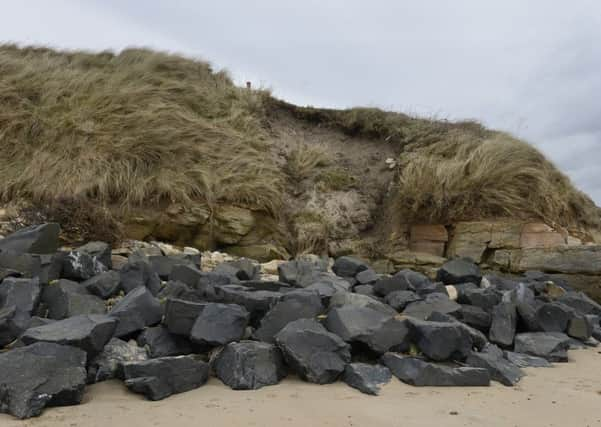Till Valley, Archaeological Society


Dr Clive Waddington, of Archaeological Research Services, kept a packed audience of Till Valley Archaeological Society members and guests enthralled as he outlined the significance of recent excavations at a remarkable site at Low Hauxley on the Northumberland coast, south of Amble.
With the area behind the site substantially affected by opencast mining, and the coast itself under constant threat of erosion, investigation of the remaining ridge of land is a race against time.
Advertisement
Hide AdAdvertisement
Hide AdMore than 30 years ago a walker on the beach noticed a stone cist, or burial box, peeping out of the sand dunes. This was followed by a sporadic archaeological investigation.
In 2009 Dr Waddington was alerted to the extent of erosion by Jim Nesbitt, a local amateur archaeologist.
Recent work on the site has been supported by the Heritage Lottery Fund and Northumberland Wildlife Trust, British Coal, Time Team and local schools.
Until the end of the Sixth Millennium BC Britain was joined to mainland Europe.
Advertisement
Hide AdAdvertisement
Hide AdA large basin, rather than a sea, bordered the Northumberland coast, but with a number of offshore islands and a large expanse of land, Doggerland, communication with Denmark and Northern Europe was relatively easy.
Could the presence of ochre mastic and scraping tools suggest the use of sealskin boats, similar to those still used in Alaska?
A Labrador ice sheet collapse and a massive underwater movement off the coast of Norway, the Storegga Slide, created a tsunami effect, raising sea levels, which made Britain an island.
The site at Low Hauxley had been regularly or seasonally occupied over a lengthy period, from the Mesolithic to the Middle Ages.
Advertisement
Hide AdAdvertisement
Hide AdSuccessive layers of wind-blown sand had helped conserve settlement strata.
From early settlers’ reliance on hunting, farming developed, and then came a familiarity with metal. Several thousand flints, both recycled and ‘new’, have been recovered, burial cairns excavated and evidence of habitation identified.
Although well to the north of Hadrian’s Wall, remains point to a significant period of stability and regular trade with the Roman world.
The burial cairns may also have been used to site beacons to warn passing ships away from the Bondi Carr rocks.
Advertisement
Hide AdAdvertisement
Hide AdOn the beach, animal and human footprints were found on top of layers of peat, once a forest floor, which were exposed when overlying sand was blown off.
Shafts leading down to coal measures were originally considered medieval, but disillusionment set in when an old postcard revealed striking miners from Amble had been doing a little mining on their own account in 1912.
The new Low Hauxley Visitor Centre will contain information on the finds, which have been deposited in the Great North Museum in Newcastle.
Clive’s book on the dig, Rescued From The Sea, is available from the Northumberland Wildlife Trust.
Meantime, volunteer walkers are regularly monitoring the site.
In 20 years the dunes will have gone, and with them a significant piece of our history.